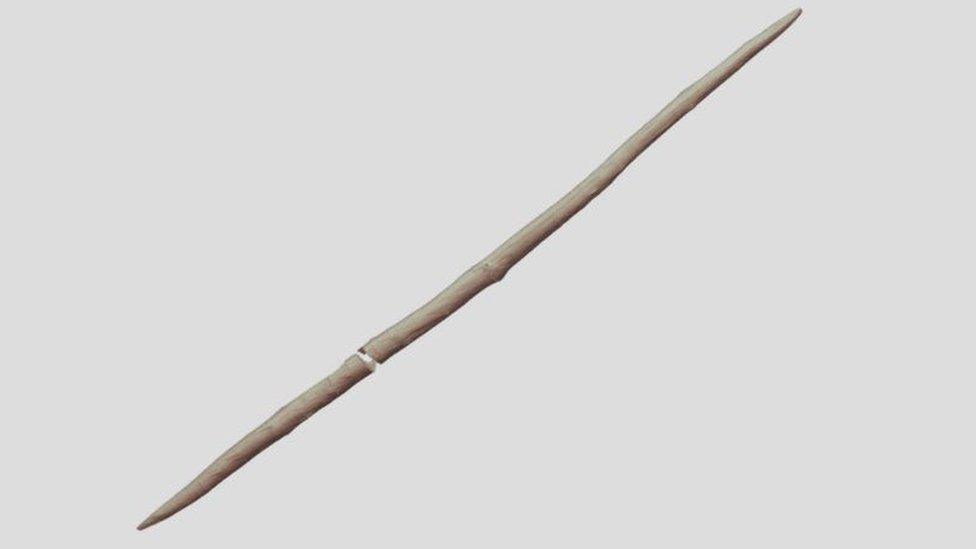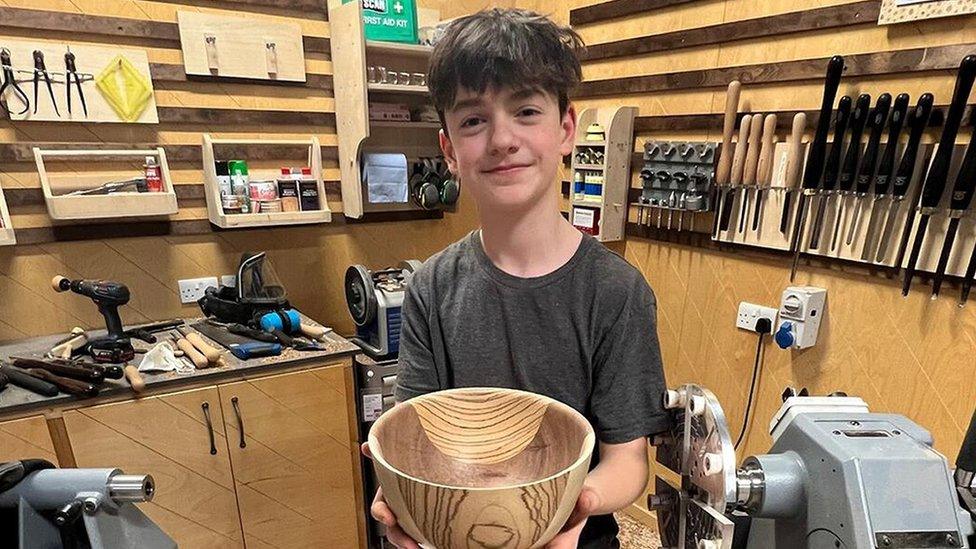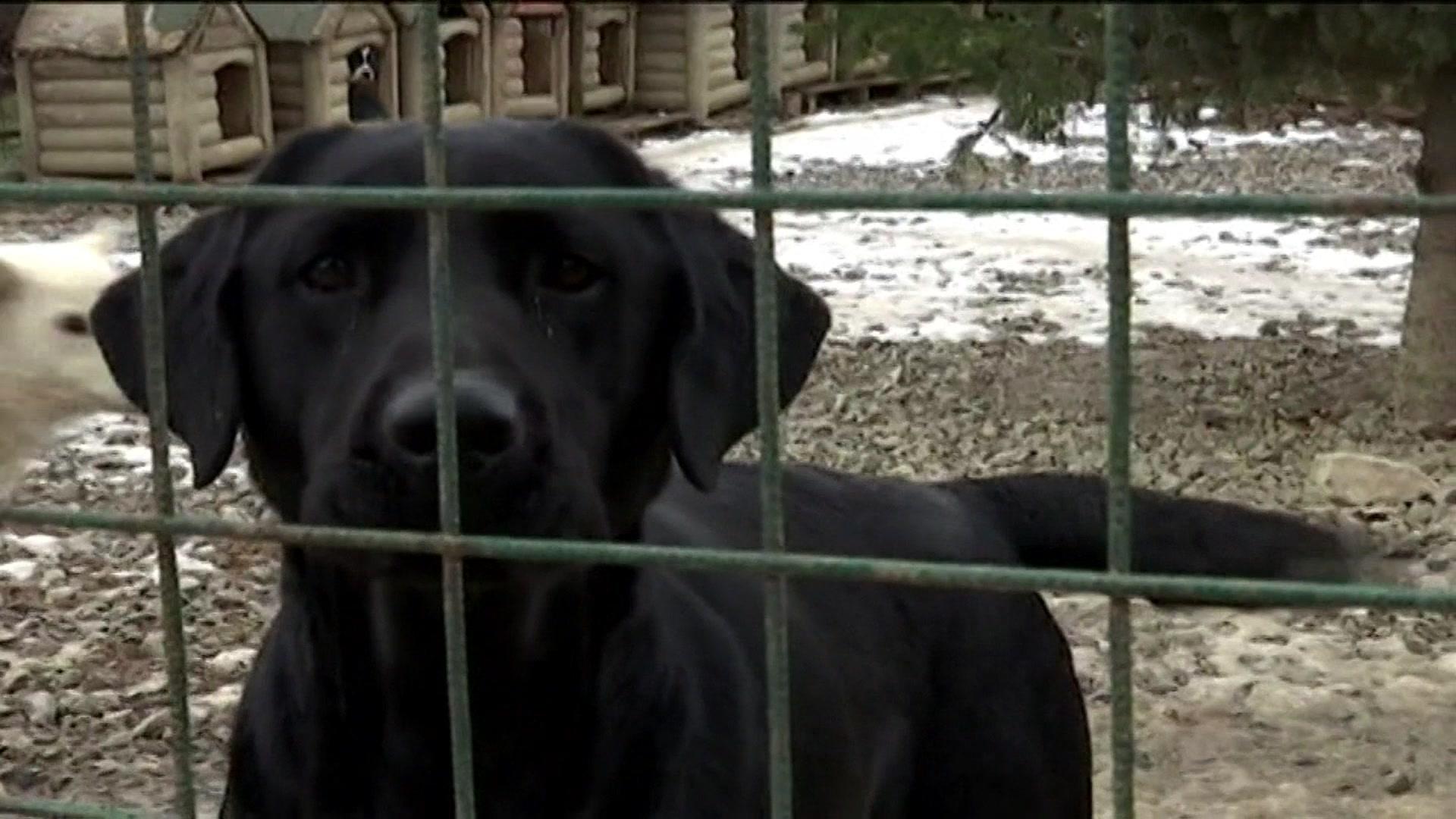300,000-year-old weapon shows early humans' woodwork skills
- Published
- comments

This is an artistic reconstruction of how the stick would have been thrown
The woodworking techniques of early humans were more developed and sophisticated than anyone previously thought. That's according to researchers, who have been studying a 300,000-year-old hunting weapon.
The double-pointed wooden stick was produced by Middle Pleistocene humans and was likely used for throwing during hunts.
The stick was found in Schöningen in Germany three decades ago and analysis has shown that it was scraped, seasoned and sanded before being used to kill animals.
According to the study, published in the Plos One journal, the weapon was most likely used by early humans to hunt medium-sized game like red and roe deer, and possibly fast, small prey including hares and birds that were otherwise difficult to catch.
The 77cm-long stick, which was discovered in 1994, is one of several different tools discovered, including throwing spears, thrusting spears and a second similarly sized throwing stick.
Dr Annemieke Milks from the University of Reading's Department of Archaeology, led the research and said that the "discoveries of wooden tools have revolutionised our understanding of early human behaviours".
Amazingly, these early humans demonstrated an ability to plan well in advance, a strong knowledge of the properties of wood, and many sophisticated woodworking skills that we still use today.
The findings also suggest group hunts of medium and small animals may have been made possible by the creation of lightweight weapons.
The use of throwing sticks as hunting aids could have involved the entire community, including children, researchers say.

The team used state-of-the-art analysis of a double-pointed wooden throwing stick to make a 3D model
Dr Milks said: "These lightweight throwing sticks may have been easier to launch than heavier spears, indicating the potential for the whole community to take part.
"Such tools could have been used by children while learning to throw and hunt."
Co-author Dirk Leder said: "The Schöningen humans used a spruce branch to make this aerodynamic and ergonomic tool.
"The woodworking involved multiple steps including cutting and stripping off the bark, carving it into an aerodynamic shape, scraping away more of the surface, seasoning the wood to avoid cracking and warping, and sanding it for easier handling."
Principal investigator Thomas Terberger added that the research has helped to provide valuable new insights and that further exciting information on these early wooden weapons could be expected soon.
- Published7 April 2023

- Published23 January 2019

